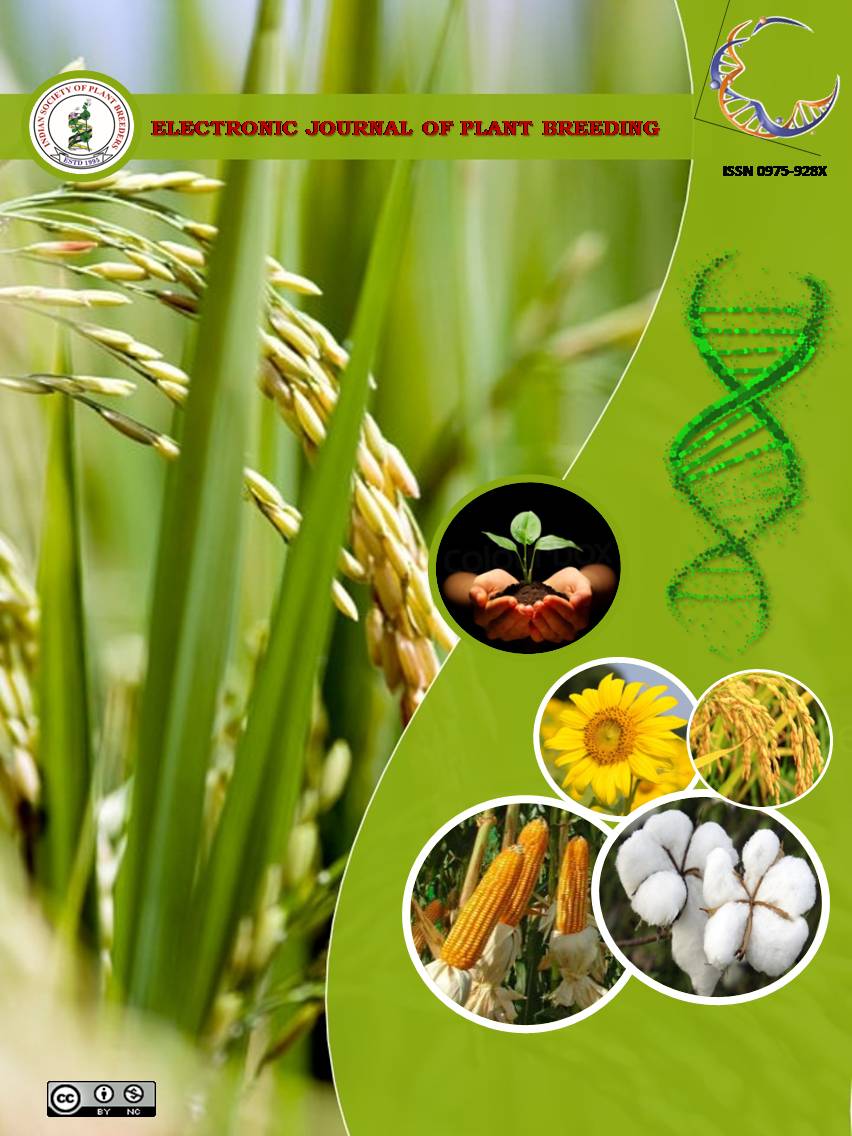Performance of bitter gourd genotypes (Momordica charantia var.muricata L.) for higher yield and quality traits under sodic soil condition cultivar mithi pagal
Abstract
The present investigation was carried out at Horticultural college and Research Institute for Women, Tamil Nadu Agricultural University, Trichy during Kharif 2017 with 30 mithipagal (Momordica charantia var. muricata.L) collected from different parts of Tamil Nadu to identify high yield and quality genotypes under sodic soil condition. Observation were recorded for the following traits viz, vine length, days to first male flower appearance, days to first female flower appearance, nodes of first male flower appearance, nodes of first female flower appearance, sex ratio, number of fruits per vine, fruit weight, fruit length, fruit girth, number of seeds per fruit, 100 seed weight, yield per vine, ascorbic acid, carotenoid content and total soluble solids. Among the genotypes MCM-19 was found to be the most promising genotype which recorded higher fruit yield per vine (0.72 kg) as well as other economic fruit yield components viz., fruit length (5.51 cm), fruit girth (6.47 cm), fruit weight (9.08 g), number of seeds per fruit (9.80), 100 seed weight (10.59 g) followed by MCM 22 and MCM 21. The highest total soluble solids was recorded in the genotypes MCM-4 (5.90 0brix) followed by MCM-21 (5.87 0brix), where as highest ascorbic acid was recorded in the genotypes MCM-26 (123.62 mg/100g) followed by MCM-22 (122.59 mg/100g). Hence selecting bitter gourd var. mithipagal genotypes with high fruit weight, more number of fruits per vine and seeds per fruit will help to improve yield per vine and quality of bitter gourd var fruits.

It is certified that:
- The corresponding author is fully responsible for any disputes arising due to the publication of his/her manuscript.
- The article has been seen by all the authors who are satisfied with its form and content.
- The sequence of names of authors in the by-line is as per their relative contribution to this experiment, giving due credit to all scientists who made notable contribution to it.
- All the authors fully understand that inclusion of any other co-authors or exclusion of any co-authors is not possible once the article has been submitted to the journal.
- The corresponding author takes full responsibility for this article.
- The address of the organization where the research was conducted is given.
- The article is exclusive for this journal, and the results reported here have not been sent (and will not be sent during its consideration by this journal) for publication in any other journal.
- Authors agree to abide by the objective comments of referees and do agree to modify the article into a short note as per the recommendation, for publication in the Electronic Journal of Plant Breeding.
- If published in Electronic Journal of Plant Breeding, the copyright of this article would vest with the Indian Society of Plant Breeders, who will have the right to enter into any agreement with any organization in India or abroad engaged in reprography, photocopying, storage and dissemination of information contained in it, and neither we nor our legal heirs will have any claims on royalty.


